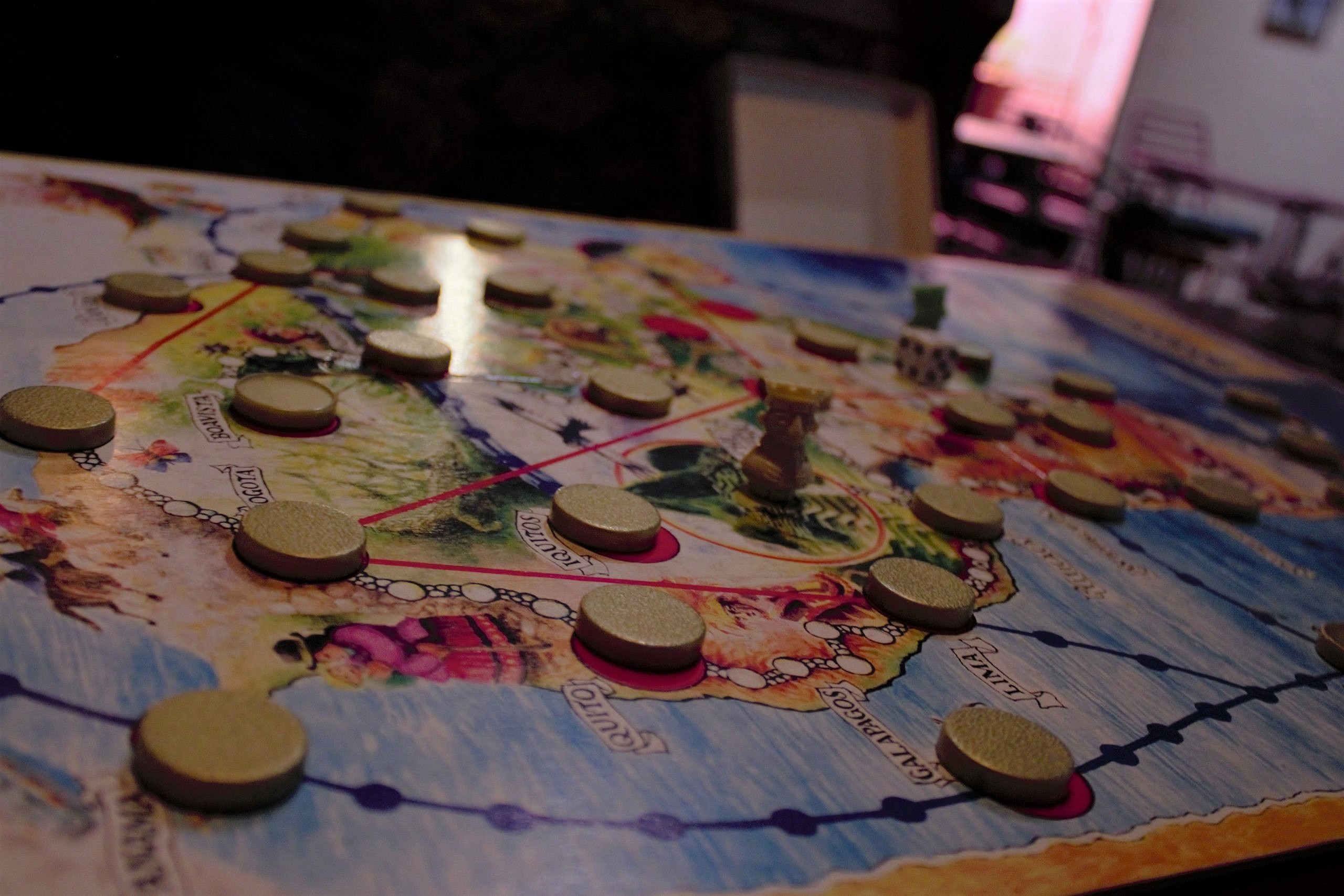In 2005, only a year before his death Kari Mannerla created a game called Inkan Aarre. The famous game Afrikan Tähti was designed by Mannerla and published over 50 years before this. The two games resemble each other and are almost identical. The only difference being that one is based in Africa and the other in South America. So, what was the need for Inkan Aarre so many years after the success of the original game? This is a question we will probably never get a real answer to.
The game follows the gameplay of famous Afrikan Tähti. The goal is to find the treasure before other players and get it back home safely. The similarities between Inkan Aarre and Afrikan Tähti are numerous: Money is needed to open the possible treasures, flying to a different location and be able to travel at sea. There are also 3 possible demons that for some reason only take your money but not your soul.
 The artwork of the board resembles the African Tähti board.
The artwork of the board resembles the African Tähti board.
Luckily, Mannerla added at least a couple of minor changes to Inkan Aarre. Players will always start from Rio De Janeiro and they must deliver the treasure to Machu Picchu. It is also now official that you can travel at sea without money, but it is slower (so no more players getting stuck in Madagascar!).
The third and most important new rule is the possibility to get a Native American guide token. There are two tokens of this kind in the game. With the Native American guide you can instantly travel anywhere on the map, thus gaining a huge advantage to yourself. This is a nice addition to the game and makes me wish there were be more of this kinds of new innovations. At least that would somehow justify the of this rip-off of the original game.
 As with the original game, luck with the dice is the key to success.
As with the original game, luck with the dice is the key to success.
So, should you play this game? Should you even buy this game? I for myself see no need for this, but nevertheless it is funny after so many years of playing Afrikan Tähti in my childhood to try something so similar. Only if there would be more differences and additional rules to this game it could be called a real sequel rather than just a copy of the original.
Pictures taken by the author.
Designer: Kari Mannerla
Publisher: Martinex
Release date: 2005
Number of Players: 2-6
Playing time: 15-30 minutes
Ages: 3+
